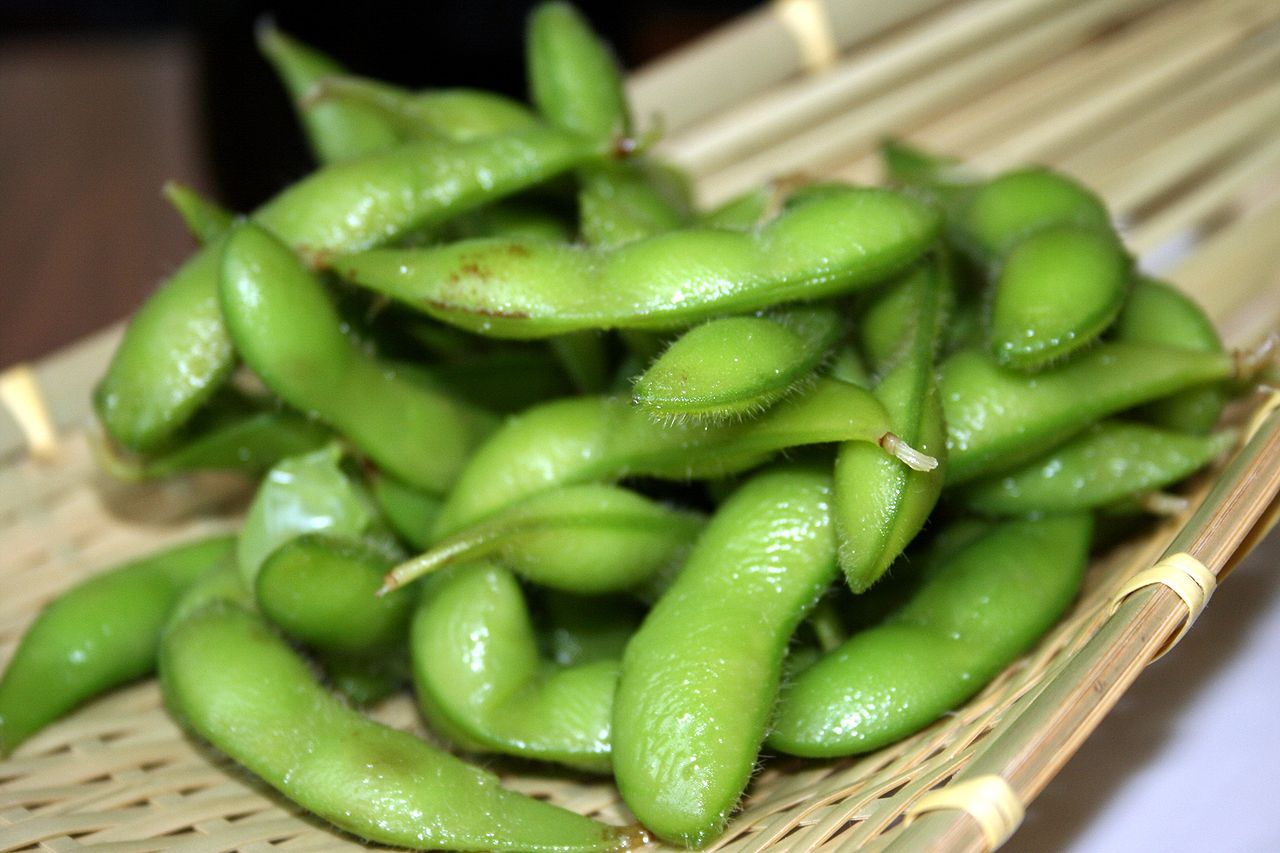Why Grow Edamame Beans in Your Garden?
Edamame beans are a nutritious and versatile addition to any garden, offering a high protein content and ease of growth. With their increasing popularity as a sustainable food source, learning how to grow edamame beans can be a rewarding experience for gardeners of all levels. Not only do edamame beans provide a delicious and healthy harvest, but they also contribute to a more environmentally friendly food system. By incorporating edamame beans into your garden, you can enjoy a bountiful harvest while supporting a healthier lifestyle and reducing your carbon footprint.
Choosing the Right Edamame Variety for Your Climate
When it comes to growing edamame beans, selecting the right variety for your climate and region is crucial for a successful harvest. Edamame beans come in two main types: bush and pole varieties. Bush varieties are compact, growing up to 2-3 feet tall, and are ideal for small gardens or containers. Pole varieties, on the other hand, can grow up to 6 feet tall and require a trellis or other support system. Pole varieties are better suited for larger gardens and can produce a higher yield. When choosing an edamame variety, consider factors such as days to maturity, disease resistance, and tolerance to heat or cold. For example, if you live in a region with a short growing season, look for varieties with a shorter days-to-maturity period. By selecting the right edamame variety for your climate, you can ensure a healthy and productive harvest.
Preparing the Soil for Edamame Planting
Before planting edamame beans, it’s essential to prepare the soil to ensure optimal growth. Edamame beans prefer well-draining, fertile soil with a pH between 6.0 and 7.0. To test the pH level of your soil, use a soil testing kit or send a sample to a laboratory for analysis. If your soil is too acidic or alkaline, amend it with lime or sulfur accordingly. Edamame beans are heavy feeders and require adequate nutrients, particularly nitrogen, phosphorus, and potassium. Add organic matter such as compost or well-rotted manure to the soil to improve its fertility and structure. Till the soil to a depth of 8-10 inches to loosen and aerate it, making it easier for the edamame roots to grow. By preparing the soil properly, you’ll be able to grow healthy and productive edamame plants, which is crucial for a successful harvest when learning how to grow edamame beans.
How to Plant Edamame Beans for Optimal Growth
When learning how to grow edamame beans, proper planting is crucial for a successful harvest. Edamame beans should be planted in well-draining soil with full sun to partial shade. Sow the seeds 1-2 inches deep and 3-4 inches apart in rows that are 3 feet apart. For pole varieties, create a supportive structure using trellises, stakes, or cages to help the plants climb. Water the soil gently but thoroughly after planting, and keep the soil consistently moist during the first few weeks after planting. As the plants grow, reduce watering to about 1 inch per week. Edamame beans are a cool-season crop, so plant them in early spring or late summer/early fall, depending on your region’s climate. By following these steps, you’ll be able to give your edamame plants a strong start, which is essential for a bountiful harvest when growing edamame beans.
Caring for Your Edamame Plants: Watering, Fertilizing, and Pest Control
Once edamame beans are planted, they require ongoing care to ensure healthy growth and maximum yields. Watering is crucial, especially during the first few weeks after planting. Aim to provide about 1 inch of water per week, either through rainfall or irrigation. As the plants grow, reduce watering to prevent overwatering, which can lead to root rot and other diseases. Fertilization is also essential for edamame growth. Use a balanced fertilizer with a ratio of 10-10-10 (nitrogen-phosphorus-potassium) and follow the manufacturer’s instructions for application rates. Additionally, keep an eye out for common pests and diseases, such as aphids, spider mites, and powdery mildew. Use organic or integrated pest management (IPM) methods to control infestations and prevent the spread of disease. By following these care guidelines, you’ll be able to grow healthy and productive edamame plants, which is key to a successful harvest when learning how to grow edamame beans.
Supporting Edamame Plants as They Grow
As edamame plants grow, they require support to reach their full potential. Pole varieties, in particular, need a structure to climb on, while bush varieties can benefit from gentle pruning to encourage bushy growth. When learning how to grow edamame beans, it’s essential to provide the right support to ensure the plants receive adequate sunlight and air circulation. For pole varieties, use trellises, stakes, or cages to create a supportive structure. Plant the edamame beans near the base of the structure, and gently twine the stems around the support as they grow. For bush varieties, prune the plants to encourage branching and promote a bushy shape. This will help increase yields and make harvesting easier. By providing the right support, you’ll be able to grow healthy and productive edamame plants, which is crucial for a successful harvest when growing edamame beans.
Harvesting Edamame Beans at the Right Time
Harvesting edamame beans at the right time is crucial to ensure optimal flavor and texture. Edamame beans are ready to harvest when the pods are plump, bright green, and about 3-4 inches long. Check for readiness by gently tugging on the pods; if they come off the stem easily, they’re ready to eat. For bush varieties, harvest the entire plant by cutting it off at the base of the stem. For pole varieties, harvest individual pods as they mature. When learning how to grow edamame beans, it’s essential to harvest them regularly to encourage the plants to produce more beans. Harvesting at the right time also helps prevent over-maturation, which can lead to tough, bitter beans. To store harvested edamame beans, place them in a cool, dry location or refrigerate them to keep them fresh for up to a week. By harvesting edamame beans at the right time, you’ll be able to enjoy a bountiful and delicious crop when growing edamame beans.
Troubleshooting Common Edamame Growing Issues
When growing edamame beans, it’s not uncommon to encounter some common issues that can affect the health and productivity of the plants. Poor germination, weak growth, and pest infestations are some of the most common problems that edamame growers face. To overcome these issues, it’s essential to identify the root cause and take prompt action. For poor germination, check the soil temperature, moisture levels, and seed quality. Ensure the soil is warm enough for germination, and the seeds are fresh and of high quality. For weak growth, inspect the soil for nutrient deficiencies and adjust the fertilization schedule accordingly. Also, ensure the plants are receiving adequate sunlight and water. To prevent pest infestations, use organic pest control methods such as introducing beneficial insects or spraying soapy water on the plants. Regularly inspect the plants for signs of pests and diseases, and take action promptly to prevent the problem from spreading. By being proactive and taking preventative measures, edamame growers can minimize the risk of common growing issues and enjoy a bountiful harvest of delicious and nutritious edamame beans. With these tips and guidelines on how to grow edamame beans, growers can overcome common obstacles and successfully cultivate this versatile and nutritious legume.









